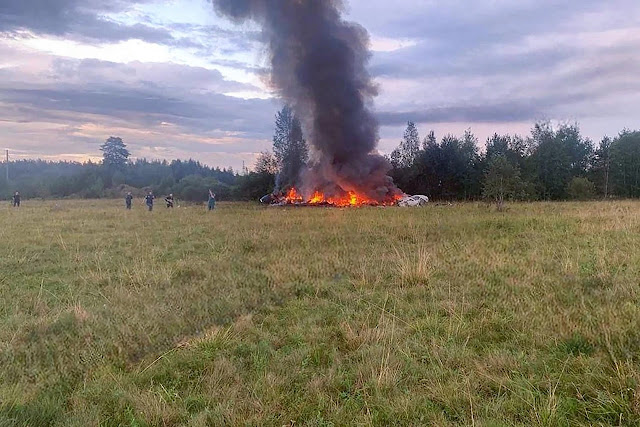 |
| Photo: www.kyivpost.com |
In an unfolding narrative, the
U.S. Department of Defense recently addressed the conjecture encircling the
crash of a plane allegedly transporting Russian mercenary leader Yevgeny
Prigozhin. Amid swirling speculations, the Pentagon clarified that no
substantiated information currently supports the notion of a surface-to-air
missile causing the incident.
During a Pentagon news
conference, Air Force Brigadier General Patrick Ryder, the spokesperson,
elaborated on the evolving situation. Despite a lack of evidence, Ryder neither
endorsed nor discarded the assortment of theories encompassing the crash.
Earlier in the day, Reuters
divulged insights suggesting the United States was actively exploring various
hypotheses regarding the crash. According to two unnamed U.S. officials cited
by Reuters, there exists a likelihood that a surface-to-air missile might have
been the cause. However, these officials, opting for anonymity, emphasized the
preliminary and tentative nature of the information, acknowledging its
potential to undergo revisions.
Ryder asserted, "At this
juncture, we are devoid of any substantial details that corroborate the reports
suggesting the involvement of a surface-to-air missile in the plane's
demise."
Russian aviation authorities
have previously reported that Yevgeny Prigozhin and his associate Dmitry Utkin,
alongside eight others, were passengers aboard the ill-fated private plane. The
crash, which claimed no survivors, transpired to the northwest of Moscow.
However, the narrative takes a
turn with the emergence of a divergent theory. Citing undisclosed U.S.
officials, The Wall Street Journal presented an alternative perspective: the
possibility of a bomb or other forms of sabotage precipitating the tragedy.
The dynamics within the U.S.
government often encompass a multiplicity of intelligence perspectives,
occasionally diverging or even conflicting in the aftermath of significant
global occurrences. Notably, the crash coincides with the two-month anniversary
of a mutiny orchestrated by Prigozhin and his Wagner mercenaries. The mutiny
saw their seizure of the southern city of Rostov and subsequent advancement
toward the capital, Moscow.
As investigations continue,
the unfolding narratives depict a complex web of conjectures around the tragic
incident, underscoring the multifaceted nature of international intelligence
assessments.
Posting Komentar untuk "Unraveling the Mystery: The Crash of Prigozhin's Plane Sparks Controversial Theories"